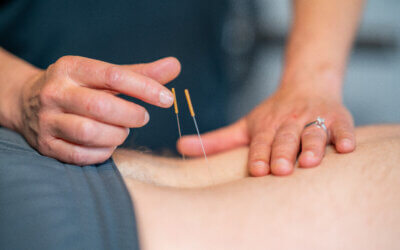Your bones have the important job of supporting the body, which makes them much like the walls of a house. Much like there are many ways house walls can be damaged, there are many types of bone fractures.
Dealing with a fracture may seem straightforward, and more than 6 million Americans have to do so every year. But, understanding a bit about the type of fracture you have can help your recovery. Physical therapists are one group of medical professionals who can help you understand the basics of common types of fractures. They can also be a vital and helpful part of your fracture recovery process.
Five common types of fractures
Having something land on your hand at work. Catching yourself when you’re falling. These are just a few of the ways that people develop different types of fractures. Physical therapists are trained to have an in-depth understanding of the musculoskeletal system, which includes your bones. As a result, they can help you understand the basics of common types of fractures. Some of the most common fracture categories are:
- Closed fractures — These are fractures that do not cause a bone to break through the skin.
- Open fractures — These are also called compound fractures. Open fractures occur when the damaged bone breaks the skin.
- Complete fractures — These are any fractures that go all the way through the affected bone and separate it into two pieces.
- Displaced fractures — This form of fracture is when a gap forms between the two sides of the broken bone. Displaced fractures are the most likely to need surgery to heal.
- Partial fractures — These fractures happen when the bone is only partially cracked and not entirely broken. A stress fracture is a minor form of partial fracture.
How can physical therapists help treat different types of fractures?
You are likely aware of the role that doctors play in treating different types of fractures, but you may not know about the equally important role that physical therapists can play. For instance, physical therapists can help:
- Speed up recovery — It’s hard to imagine that you can do exercises while you have a cast on, but you can. Physical therapists can show you isometric exercises that can help keep your muscles toned and your fracture stable. These exercises can also help boost your body’s natural recovery mechanisms, as one study shows.
- Rebuild your strength and flexibility — After your cast comes off, the affected body part is often weaker and stiffer than it should be. Your physical therapist can help ease stiffness with techniques like soft tissue mobilization. They can also show you how to perform therapeutic exercises designed to help you start rebuilding your strength.
Find physical therapy for many types of fractures at Continuum Wellness
Looking for the most effective way to treat a broken bone? Our Continuum Wellness physical therapists are ready and willing to help you. We can build you an individualized treatment plan that’s designed to:
- Help stabilize your fracture while it heals.
- Reduce pain.
- Decrease healing time.
- Rebuild strength and flexibility.
- Improve your ability to do normal daily activities.
Contact our team today for more information about the part we can play in your fracture treatment or to schedule an initial appointment.



